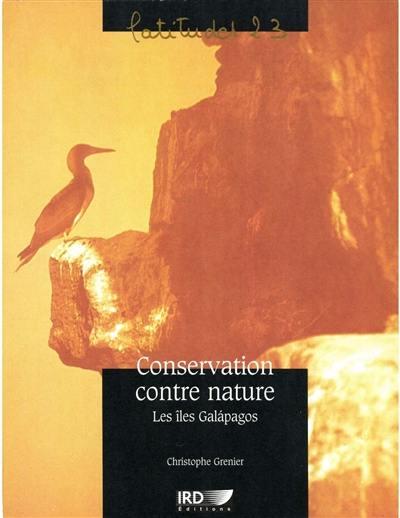
Fiche technique
Format : Broché
Nb de pages : 376 pages
Poids : 870 g
Dimensions : 20cm X 25cm
EAN : 9782709914512
Conservation contre nature
les îles Galapagos
Quatrième de couverture
L'archipel des Galápagos, classé «patrimoine naturel de l'humanité», abrite un parc national prestigieux qui bénéficie d'aides internationales considérables. Destiné à faciliter les recherches naturalistes, censé servir de modèle à de nouvelles formes de valorisation touristique plus respectueuses de l'environnement (écotourisme), ce parc est aujourd'hui l'objet de nombreuses critiques. Le développement des réseaux touristiques et migratoires a accéléré le rattachement de l'archipel au territoire équatorien et au marché mondial. La nature «protégée» est devenue un espace soumis aux exigences de rentabilité d'un monde caractérisé par la marchandisation et l'uniformisation des lieux. Cette «conservation contre nature» a des conséquences catastrophiques pour les écosystèmes et les habitants de l'archipel. Au-delà de l'étude d'une région emblématique, l'auteur mène une réflexion sur la place de l'homme dans la nature, véritable plaidoyer en faveur de la préservation de la géodiversité. Son ouvrage novateur et stimulant s'adresse à tous les acteurs soucieux de l'avenir de notre planète.
The Galápagos archipelago, a World Héritage site, possesses a high-prestige national park that benefits from considerable international aid. However, this park aimed at facilitating research by naturalists and at serving as a model for new forms of tourism displaying more respect for the environment (ecotourism) is severely criticised today. The development of tourist and migration networks has accelerated the connection of the archipelago to Ecuadorean territory and the world market. The "protected" natural environment has become an area subject to the profitability requirements of a world characterised by the commercialisation and uniformisation of places. This "unnatural conservation" is having catastrophic effects on the ecosystems and inhabitants of the archipelago. Beyond studying an emblematic region, the author considers the position of man in nature and pleads for geodiversity. Innovative and stimulating, this book is intended for all those who care about the future of our planet.





